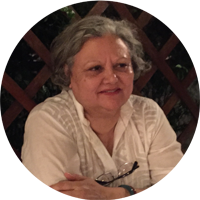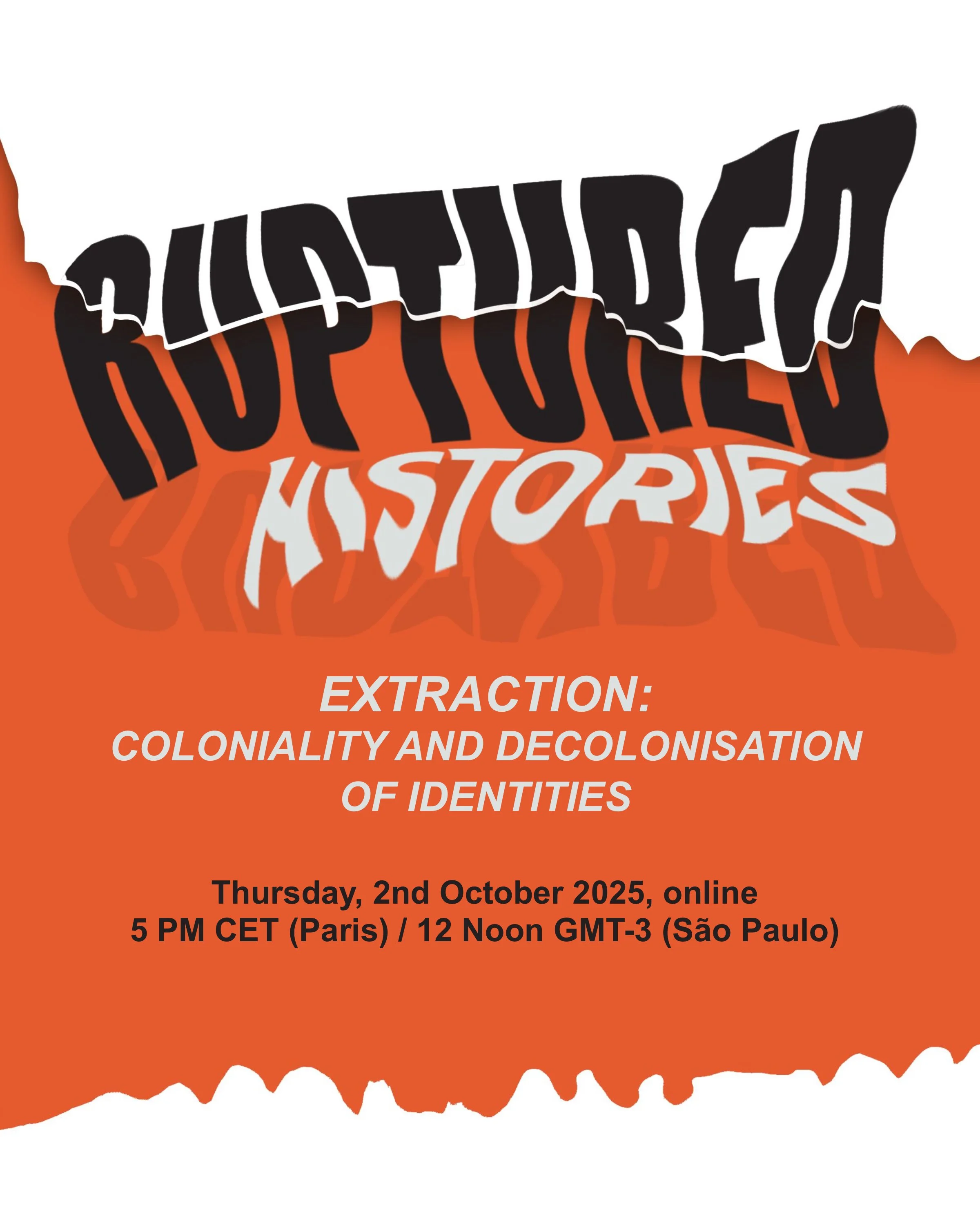FELLOWSHIP FUND COMMITTEE
COMMITTEE MEMBERS
Karen von Veh (Chair, Open Section), Małgorzata Kaźmierczak (ex officio, Poland), Niilofur Farrukh (Pakistan), Elona Lubytė (Lithuania), Robert-Jan Muller (Netherlands), Danièle Perrier (Germany), Joke de Wolf (Netherlands), Marta Anna Raczek (Poland), Arkadiusz Poltorak (Poland), Ana Lúcia Beck (Brazil)
MISSION STATEMENT
The mission of the FFC is to enhance the critical understanding of themes, which are central and time related, among AICA members and beyond. To achieve this goal, it organises forums and encounters in different parts of the world, with a special focus on opening up the art discourse in countries where art criticism is still evolving. It also has the additional responsibility of resource mobilisation for AICA projects. Part of the funds are used to host selected art critics at AICA Congresses to create an opportunity for extensive professional exposure and networking. In response to the new realities of the Covid 19 pandemic, FCC in the near future will concentrate on webinars to exchange perspectives on local and global critical debates to foster understanding of the different values in our globalized world. The Committee meets twice annually, at the time of AICA’s Spring Board meeting and of its AGM, in the autumn. Its Chair is nominated for three years on a recurrent basis. Its members are listed and approved at the time of AICA’s AGM. They are not limited in number.
COMMITTEE PROJECTS
RUPTURED HISTORIES: EXTRACTION - COLONIALITY AND THE DECOLONISATION OF IDENTITIES
02 October 2025
The full program is available as a PDF file in English and Spanish..
Recording of the webinar is available on YouTube Channel.
RUPTURED HISTORIES: IN THE SHADOW OF RUSSIA. UNCOMFORTABLE HERITAGE IN POST-SOVIET ART, PUBLIC SPACES AND MUSEUMS.
13 September 2024
RUPTURED HISTORIES: CRITICAL EXCHANGES ON ISSUES OF DECOLONISATION
PART ONE: Decolonisation in the Museum: Interrogating the History of Slavery
To learn more download the event brochure below (available in English, French and Spanish languages).
REVIEW OF THE AICA-WEBINAR
DECOLONISATION IN THE MUSEUM: INTERROGATING THE HISTORY OF SLAVERY
Written by Laura Kneebone.
On Friday September 3rd, AICA International hosted a webinar titled Decolonisation in the Museum: Interrogating the History of Slavery.
This focused on two exhibitions: Slavery at the Rijksmuseum Amsterdam in 2021, and Afro-Atlantic Histories at the Museo de Arte de São Paulo (MASP) in 2018. This programme was the first in the Ruptured Histories Project, launched to question decolonisation from a range of vantage points. After opening with talks by the curators of each exhibition, Valika Smeulders and Adriano Pedrosa, the subject was commented on by Anthony Bogues from Brown University’s Center for the Study of Slavery and Justice and Babacar Mbaye Diop, director of the 11th Dakar Biennale and chair of AICA Senegal. What are the long term effects of these exhibitions on their institutions, according to the curators?
Starting the programme was Smeulders, one of the four curators of the Slavery exhibition at the Rijksmuseum who strove for a multitude of geographical and cultural perspectives. The exhibition shone a new light on the Rijksmuseum’s collection as one that proudly represents Dutch identity, but is also inextricably linked to the history of colonialism. The narrative structure for the exhibition took the shape of ten investigations into human lives that were entangled with slavery. Available via audio tour, each story was narrated by descendants of the people whose lives were chronicled: “The aim was an exhibition that visitors can recognize themselves in.” The curators paid attention to aesthetic objects with subtle connections, such as a box with a tiny gold inlay of enslaved people, or Rembrandt’s portrait of Oopjen Coppit. Instantly recognizable, Oopjen is presented here as a woman whose inherited wealth came from sugar cane. Although the museum poses questions regarding her agency as a white woman benefiting from slavery, the framing of Oopjen in this context immediately makes clear how wealth garnered from colonial violence is presented within the ‘Golden age’ narrative. Perhaps most interestingly, Smeulders spoke of collaborative research between researchers of different disciplines. An expert on oral history and a biologist were together able to find proof that the story of Zapali, who survived her escape as an enslaved woman by braiding rice into her hair, was not the stuff of legend but of reality. This multidisciplinary approach, almost forensic in nature, sets an interesting precedent into how we might constitute scientific facts. For future editions of the Ruptured Histories Project, this could be worth delving into more: how do we decolonize the museum collection as an area for future knowledge production?
Continuing the programme from here, Pedrosa explained how Afro-Atlantic Histories was an exhibition in a line of year-long ‘histories’ exhibitions. “In Portuguese, ‘histories’ encompasses fiction and non-fiction, never a single or final history: impermanent, to be revised and contradictory.” Pedrosa is a curator at the MASP, a privately owned museum with a large collection of contemporary art. Many previous exhibitions on ‘histories of…’ were curated before this, revolving around themes such as childhood, dance or ecology. In preparation for Afro-Atlantic Histories, several seminars were organised. During one of them in 2016, History of Slavery, the term Afro-Atlantic was chosen instead, to be used in the future in line with the exhibition’s polyphonic approach. The MASP has an extensive portrait collection, many of which were juxtaposed with contemporary works by black artists. Such was the case with an Ellen Gallagher painting, shown between two of Albert Eeckhout’s famous depictions of Afro-Brazilian people, on loan from Copenhagen. The exhibition was not chronologically organised, nor by media or territory – instead, themes such as Maps and Margins, Emancipations or Rites and Rhythms were chosen. According to Pedrosa, these ‘histories’ are an excellent platform to acquire more works by Afro-Brazilian artists for the permanent collection, justifying the extensive display at MASP in 2018.
After the talks by the curators, Bogues took over shortly and commented on the concept of history not as a relationship between past and present, but as catastrophe; he could see this definition of history present in both exhibitions. Colonialism and slavery are meant to be seen as a longue durée, “…not a single event but a process impacting deep everyday practices.” Afro-Atlantic Histories actively used artists’ voices to convey a human – black – experience. The ten narratives proposed by Smeulders’ team did so not by confronting Dutch history as much as complicating it: “We chose to highlight personal stories because the violence is something that happens to you, not something that defines you.”
Following Bogues, Diop added to the conversation by relaying the research done on the ‘slave house’ on the tiny island of Gorée off the coast of Dakar, an important hub on the Atlantic slave-route. The ‘official’ narrative of the house – who lived there, and how many slaves they owned – is documented, but what role can art play in a decolonial understanding of the slave house? A group of researchers took testimonies from descendants of the slaves who lived underneath the French family that used to own the house, and were depicted in front of it in prints. These living memories were processed by artist Lamine Barro to be made into large sculpture installations for the house, changing the public’s perception of the site. Considering that Gorée is a UNESCO world heritage site, the Rijksmuseum has a national status and that MASP houses a privately owned collection, it could have been interesting to contrast the limits these three different institutions encounter, both politically and financially, but unfortunately there was no time for this particular discussion during the webinar.
In conclusion both Smeulders and Pedrosa commented that the exhibitions on slavery had sustainable impact on their institutions. At the Rijksmuseum, each department gained new staff members following the research for Slavery, and works on permanent display in the rest of the museum received second wall texts including their colonial context. After a year, these second texts will be removed in order to shape one new narrative, instead of keeping two separate ones. At MASP, five new Afro-Brazilian curators have been added to the staff and the rubric for acquisition now allows for more decolonial context. Its new permanent collection display shows black artist front row in its iconic glass displays. It is clear that much thought has gone into attempts to sustainably transform the Rijksmuseum and MASP into less colonial institutions for the future and that neither exhibition was meant to be a temporary intervention – time will tell what effect the aftershocks of Slavery and Afro-Atlantic Histories will have on museum collections.
You can watch the entire webinar on YouTube here.
Laura Kneebone is an art historian currently enrolled in Art and Performance Research Studies at the University of Amsterdam. She is writing a thesis on conceptual art and indigeneity in Latin-America and was a participant of the AICA mentorship program.
















